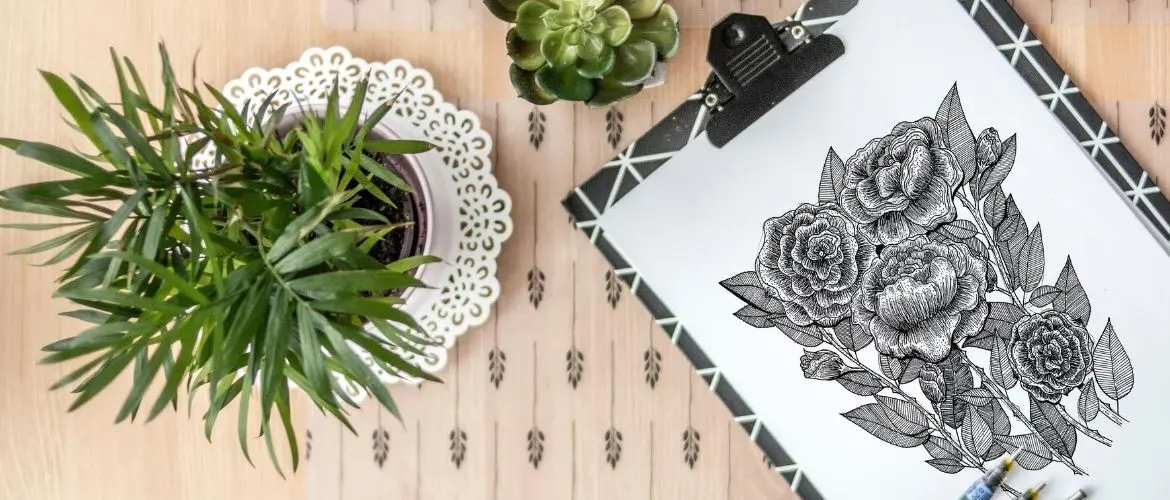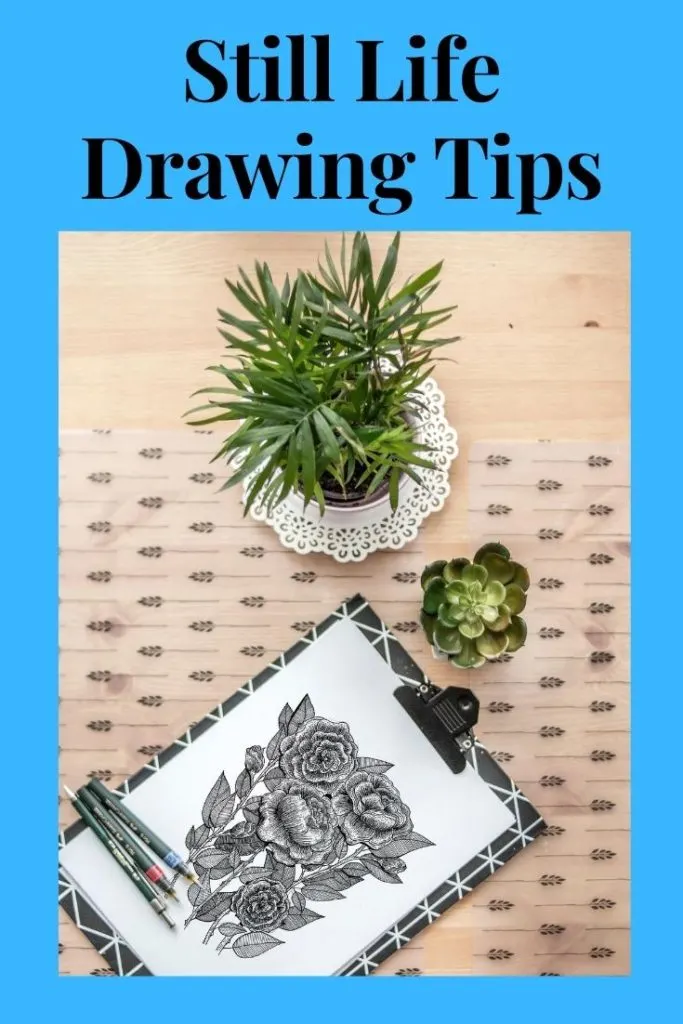Still life drawings are one of the classic forms of art that showcase the awesomeness of everyday objects.
It’s all about taking ordinary items and bringing them to life on paper with precise pencil strokes.
Whether you’re an aspiring artist or just a fan of art, understanding the techniques of still life pencil drawings is key to appreciating this timeless art form.
Still life drawing is an age-old practice that has graced many an art class.
When it comes to turning real life into art, you have to learn to look at things differently.
Using the right still life drawing techniques
This process involves using a special set of techniques to gather what exactly needs to be copied to make real life into art.
As far as art styles go, it is something that every artist should know how to do.
Whether you want to make realistic art or not, learning some still life drawing tips teaches valuable skills that can help you to improve as an artist.
It allows you to become confident in bringing your art to life in a believable way.
Fortunately, I threw together some of my favorite tips for still life drawing to help you get started and help you make still life drawing easy.
These tips will be vital in how to draw still life.
Use these still life techniques to take your art to the next level.
The History of Still Life Drawings
Still life drawings have been around since the ancient times of Greece and Rome.
Back then—they were used to show the beauty of nature and the objects found within it.
Over time, artists started including more everyday items and now still life drawings are loved by people of all ages and backgrounds.
The Techniques of Still Life Pencil Drawing
Drawing still life with pencils requires patience, a ton of attention to detail, and a solid understanding of light and shadow.
The process starts by picking out the objects you want to draw and thinking about how light and shadow will interact with each one.
Then (using different pencils to get the right level of detail) you bring each object to life with precise strokes that capture unique textures and details.
Some of the most important techniques for still life pencil drawing include:
- Proportions: Making sure each object is accurately represented in drawing is crucial
- Light and shadow: Understanding the way light and shadow work with the objects is key to creating a convincing still life drawing
- Textures: Paying attention to the way each object’s surface reflects and absorbs light helps bring the drawing to life
The Benefits of Still Life Pencil Drawing
Still life pencil drawing has a ton of benefits, both for artists and art enthusiasts. Some of the best include:
- Improving your drawing skills: Practicing still life drawing can help you get better at drawing in general
- Understanding art better: By studying still life drawings, you can appreciate the art form and its history even more
Relaxation: Creating a still life drawing can be a peaceful and chill experience that takes you away from the stress of everyday life
Learn to Consider Proportions
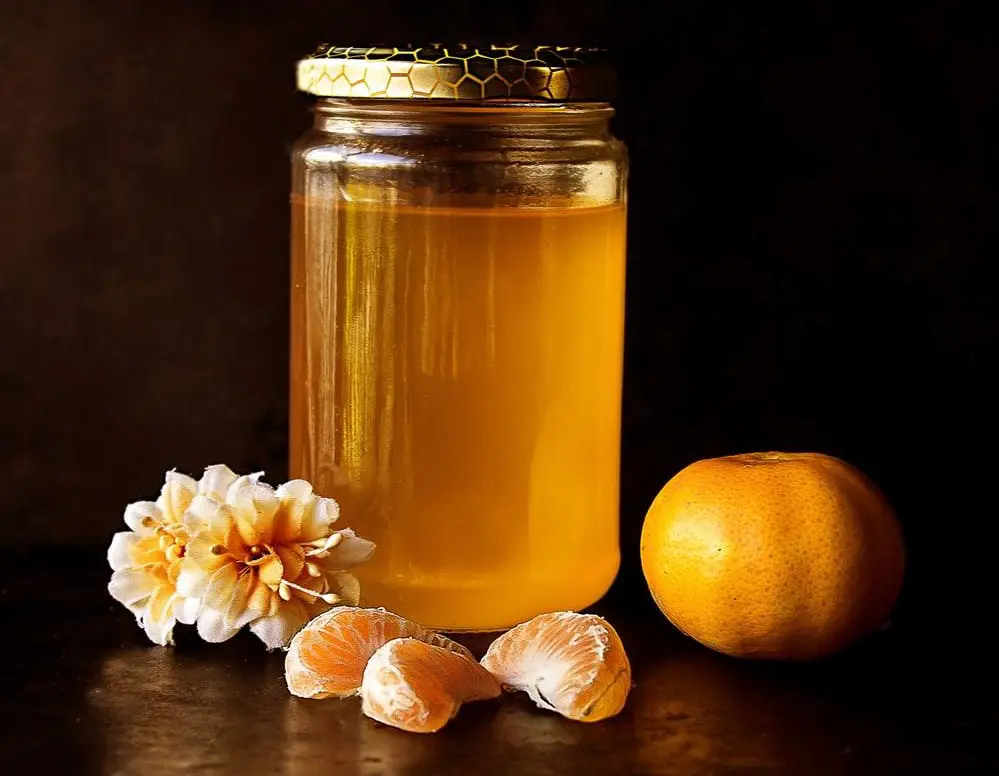 Photo by Roberta Sorge
Photo by Roberta Sorge
One of the most surefire tips for still life drawing when it comes to successful drawing is to learn all about proportions.
It is one of the most important tips for drawing still life you should focus on.
If you are going to work on bringing something to life, you want to make an exact rendering.
This means understanding the size difference in all of the available components so that you can create a replica.
A huge problem that artists run into with proper renderings is that they don’t end up getting the proportions right.
When they are off, you will realize quickly that the entire image is off.
It helps to begin by thinking about items in a scene and how they relate to each other.
You can do this by using unofficial measuring techniques.
For example, you might realize that a coffee cup is approximately two lip balm tubes tall.
It might seem silly, but it will help you when it comes to sketching out and spacing these items.
Understanding where they fall in relation to one another will help you to create a realistic recreation of the scene.
Don’t Be Afraid to Exaggerate
Sure, still life drawings are meant to be recreations of life, but you can always take creative control.
As a beginner, you may think you need to draw what you see exactly as it is; however, many still life painters and artists were known for putting their spins on this style of work.
You can enjoy simplifying or exaggerating your drawings to bring about an interesting new look.
Knowing when to exaggerate forms is one commonly overlooked still life drawing techniques for beginners to be able to gain mastery.
As long as you stay true to the original scene in some regard, it still counts.
You can alter design, depth, texture, or patterns to spice up your drawing in no time at all!
Look for Basic Shapes
One of the greatest still life drawing tips you can do is to identify the basic shapes in the items around you.
While not every item will be a perfect cylinder or square, some can be broken down into them as a start.
This is a great way to set up the drawing, particularly when managing your proportions.
You won’t want to miss out on the chance to make your life easier.
Use basic shapes to map out where everything will fall.
You can easily add detail after.
In many cases, you will find that certain objects have a general shape within them.
This allows you to easily place and proportion the shapes and worry about the rest later.
It is possible for you to use this to help you to make the item the correct size and will make it easier to add detail.
By using general shapes, you can ensure that you aren’t so focused on the details that you end up with a disfigured item.
Make A Two-Dimensional Twist
If you are looking to tips for still life drawing, consider flattening the elements.
The results of this technique can be pretty amazing.
The general idea is that you remove all depth from the scene.
In the end, you will have an incredible scene recreation that looks like someone took an iron to it.
Not only is this incredibly fun to look at, but it can be an interesting drawing challenge.
This is one area where you have to know the rules to know how to break them!
Sketch Lightly Still Life Drawing Tip
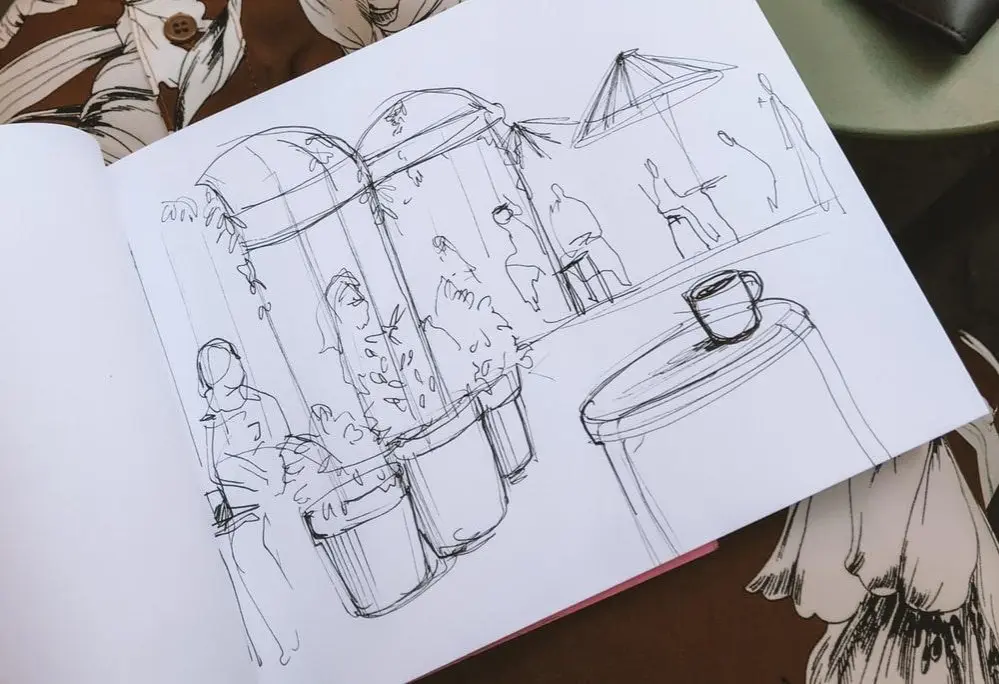 Photo by Charlota Blunarova
Photo by Charlota Blunarova
Most artists know to do this the first time around, but it is particularly helpful with still life drawings.
Realistically, you won’t know if your drawing is working until later.
To understand how your drawing will work, you need to get all of the elements added.
They do not need to be in fine detail, but they should all be there.
Making sure that everything is spaced appropriately is crucial for the success of the final image.
Sketching lightly allows you to get a vague idea of what you need to do in the end.
Before you add the details, glitz, and glam, you want to make sure everything looks right.
By using a light sketch, you can get a general feel for the piece before you get too far into it.
This can save you on revisions and just make your life that much easier in general.
Take Note of Lighting
When it comes to still life drawing, you have to understand lighting and all of its angles.
This is important to ensure that everything looks on paper how it does in real life.
A lot of the time, if you have an image that is looking flat, the lighting is off.
Lighting tends to be the thing that brings together an image.
It breathes life into images by adding that view of depth.
Making sure that the lighting is correct can make it easy for you to show off your ability to recreate reality.
Worship the Shadows
If there is one component of still life drawing that is crucial, it is the shadows.
Getting the shadows right, more often than not, makes the image.
Since you are capturing a moment suspended in time, you want to give it the proper depth.
It is a matter of taking a 3D scenario and making it three dimensional on paper as well.
Even though your drawing is flat, your audience should look at the image as if they could reach right in.
Shadow placement is huge for creating that signature still life drawing look.
Objects will almost always have shadows, and it is what makes them seem so vivid.
Focus on analyzing shadows in relation to the object.
Look at their shape, their coloring, and anything else, to figure out how to apply them appropriately.
This is a great way to make the objects lean off the page.
It can also help you to show off the lighting and proportions.
Vary Your Texture
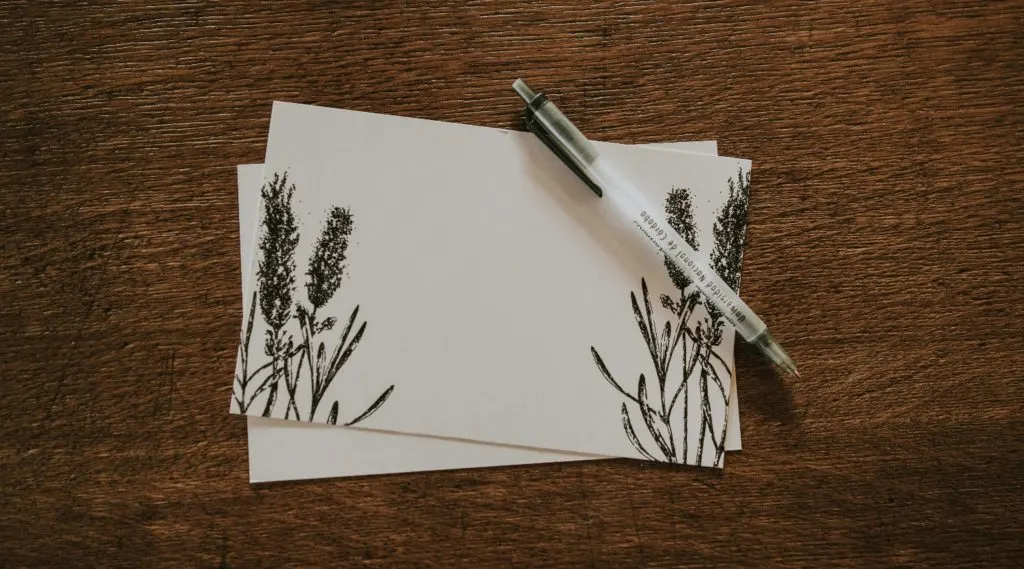 Photo by Nahuel Hawkes
Photo by Nahuel Hawkes
Though still life drawing is meant to be a more or less accurate rendering, you are still in control.
An exciting way to make your still life drawings more engaging is to focus on highlighting texture.
You don’t need to copy every single bit of texture exactly.
Instead, focus on highlighting certain elements and blurring others as needed.
The result of this is incredibly appealing to look at.
It also makes your still life drawings look more pleasing aesthetically.
Don’t Be Afraid to Overlap
Though drawings tend to be focused more on being pretty and aesthetically pleasing, real life is messy.
The real key to successful still life drawing is to focus on the reality of the situation.
In real life, objects overlap in a scene.
You want to be aware of this and analyze where and how this works.
This will make it possible for you to bring a scene to real life in a realistic way.
It also shows why proportions are so important.
If your coffee cup is twice the size of a plate, we have problems.
To do this successfully, you will want to utilize your sketching step to make sure that the items are correct.
This will help you to make sure that they are proportional and that they cross at the right places.
Making sure that the objects overlap in the right spot is crucial for believability.
Don’t Shy Away from Color
The most common kinds of still life drawings are generally black and white, but that is not law.
You can easily enjoy bringing some color into your drawings for a better image.
Adding coloring to your images can help bring your drawing together.
You can choose to color for realism or add your creative twists for a more interesting look.
Black and white drawings are great to look at, but color always brings something extra to the mix.
No matter what, color makes art pop!
Start with Big Objects to Make Still Life Drawing Easy
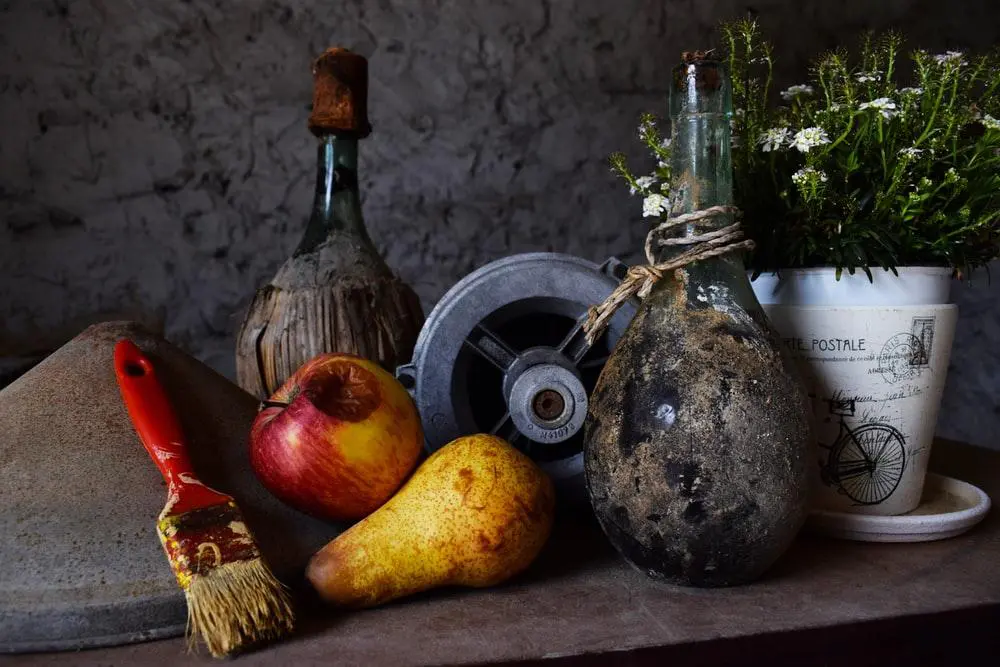 Photo by Chris Barbalis
Photo by Chris Barbalis
There is a pretty good chance that you will be drawing a scene with objects of varying size.
Starting with the big objects can help you to set the proportions for all of the other objects in the scene.
These items can make it easy for you to focus on getting the placement and sizing correct for the rest of the scene.
It is also easier to add smaller items into a scene than it is bigger ones.
Think of the large objects as anchors around which the entire scene will be built.
Practice Your Shading Techniques
A huge part of successful still life drawing is built around shading.
Not all shading areas are created equally.
You will want to learn how to manage your shading in terms of darkness and overall shape.
In most of these drawings, your shading won’t necessarily be a distinct area.
Often, these shadows will be used to bring together elements of an image or imply color changes.
Focusing on learning how to blend out your shading is crucial.
Rather than bringing your shaded area to a hard stop, practice letting it fade out naturally.
This will be more smooth and realistic to the viewer.
Shading applies to all portions of the drawing, items and background alike.
Choose Your Scene Carefully
A big mistake that people make is choosing the wrong scene for their still life drawings.
Though you might think that just about any scene could be made to work, and you’re right, you are also wrong.
A good still life drawing is about more than just technique.
You will want to choose an aesthetically pleasing scene to work in the first place.
It is important for an appealing final product.
Consider Your Angle
A great way to make your still life drawing easy is to consider your angle.
If you consistently change the angle at which you see the image, you will be in trouble.
Choose a specific angle to view your items.
This can be used to make the image more appealing visually or just to challenge yourself.
Some people even opt for taking pictures at an angle to make sure that it stays consistent.
If you want to take a scene and shine a new light on it, changing perspective is a great way to do it.
Conclusion
The art of making still life drawings is one that has been a staple for artists throughout the ages.
Not only is this an amazing way to get the most out of your talents and improve your craft, but it is also fun.
The best part about still life drawings is that you can create the scene.
Instead of relying on what reality gives you, you can assemble a scene to work from.
This means that you are in control every step of the way and make it possible to make some truly beautiful art by using these drawing still life tips!
What are some still life objects you like to draw?
Still Life Drawing Tips FAQ
How do you choose the right subject matter for still life drawing?
When it comes to choosing the right subject matter for a still life drawing, I think it’s all about finding objects that inspire you.
It could be anything from a vase of flowers, to a collection of vintage bottles, to a bunch of fruit. Just pick something that catches your eye and makes you excited to create.
How do you effectively use lighting to enhance your still life drawings?
Lighting is key when it comes to still life drawings! It can completely change the mood and atmosphere of your piece. Try playing around with different light sources and see what kind of effects you can create.
I personally like to use natural light from a window or skylight, but you can also experiment with lamps or even candles for a more moody vibe. Just don’t forget to consider the shadows and reflections that your lighting will create!

